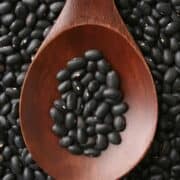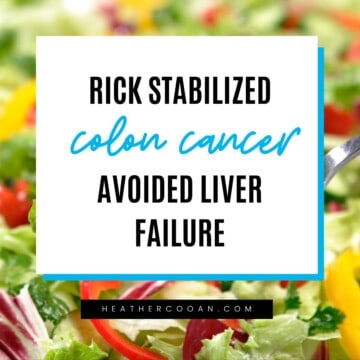It should come as no surprise that sugar has been linked to higher levels of inflammation. Because obesity is a growing problem in the United States and around the world, our understanding of the effects of sugar on the body has become more and more clear. In this post, I’m going to dive into how high levels of sugar (glucose) in the body drive widespread inflammation over time. (Warning: It’s gonna get a little science-y up in here.)

QUICK REFERENCE
Hyperglycemia (aka High Blood Sugar)
Research has shown that diets that are high in refined starches, like all-purpose flour, sugar, high-fructose corn syrup, saturated and trans-fatty acids, and low in fruits, vegetables, whole grains, and omega-3 fatty acids can cause an activation of the innate immune system (read more about how sugar impacts the immune system). It is thought that this is due in part to an overproduction of inflammatory cytokines and a reduced production of anti-inflammatory cytokines. (1)
Chronic low-grade inflammation is a key factor in the development of autoimmune disease, cardiovascular disease, diabetes, neurodegenerative diseases and cognitive decline, and even depression. (2) The Standard American Diet, poor eating habits and the consumption of high-sugar soft drinks often lead to hyperglycemia, which is an elevated blood glucose level. This elevated blood glucose level is a hallmark of various metabolic disorders, including diabetes, a disorder that is very closely associated with obesity and poor nutrition. (3)
When someone is suffering from a metabolic disorder, they have increased levels of glucose circulating in their blood, and this sustained hyperglycemia can begin a widespread and degenerative process of inflammation.
Pancreatic Stress and Insulin Resistance
So, how does our body deal with high blood sugar levels? That task falls on the pancreas, which produces hormones that are responsible for controlling our blood glucose levels. Insulin is the primary hormone that controls our blood glucose levels. When someone has a high level of glucose in their bloodstream, the pancreas is cued to produce insulin. The insulin is produced by beta cells (β cells) and is then released into the bloodstream where it travels to the liver, muscle, and fat tissue. The insulin makes it possible for those tissues to absorb the glucose, causing blood glucose levels to fall.
You see, high levels of blood glucose are toxic. Blood sugar levels are tightly controlled by a mechanism called homeostasis. The crazy part is that the pancreas intervenes when the equivalent of 4 teaspoons (4 grams) of table sugar (half of which is fructose and must go through the liver before it hits the bloodstream) is in the blood. That’s not very much sugar given that all carbohydrates are reduced to glucose in the body and if you’re eating the standard American diet, you’re getting well over 300 grams of carbohydrates (sugar) every day!

Chronically poor dietary habits, those that continue day after day, create chronically elevated blood glucose levels and continuously sustained production of insulin. With a consistent supply of insulin, liver, muscle, and fat cells begin to become resistant to insulin, contributing to the perpetual elevation of blood sugar levels, and even more insulin production by the body in an attempt to bring down the glucose levels. When insulin resistance begins to happen, it can cause a host of issues including sleep disturbances that lead to elevated cortisol levels, and an increased risk of obesity, hypertension, and diabetes. (4)
With consistent insulin production, the beta cells of the pancreas begin to produce and secrete another hormone-like substance. White blood cells in the pancreas respond to this new hormone and consume it. Inside the white blood cells, this hormone-like substance combines with glucose to create free radicals, an unstable atom that is responsible for causing cellular damage and death and illness and aging. The free radicals in the white blood cells react with sentinel proteins, which are biological markers that affect the activation state of various cellular processes. These specific sentinel proteins aggregate with cellular proteins, and then adaptor proteins bind to this protein structure.
The adaptor proteins start to capture inactive proteins within the cellular fluid, activate them, and release the new active proteins back into the cell fluid. This structure is called an inflammasome, and its entire purpose is to aid in combining and activating these inflammatory proteins. These newly active immune proteins then convert smaller signaling proteins into their active forms, and they are then secreted by the white blood cells into the pancreas. (5)
As with many inflammatory or immune system responses, this process should happen in response to a pathogen that poses a threat to the body. But in the case of hyperglycemia, the inflammatory process is a byproduct of poor nutrition that increases the blood sugar level beyond the point that the body can cope with.
How Inflammation Leads to Widespread Damage
When the inflammatory proteins are secreted by the pancreatic white blood cells, it causes the beta cells to die. And, as the beta cells die, the diseased pancreas can no longer produce sufficient levels of insulin to combat the body’s elevated blood sugar levels. This process speeds up disease progression. Now, because there are insufficient levels of insulin to keep the blood glucose in check, the uncontrolled elevation in blood glucose causes widespread inflammation and damage to tissues throughout the body. If you want to see this process in action, check out this video.
The Good News
I think it’s important to understand the underlying process of how sugar leads to chronic inflammation. Even though we can feel really removed from our bodies on the cellular level (and it can get pretty darn confusing), trying to learn about it, understand it and connect it to our health and well-being, can help us gain perspective on how our actions are either priming our bodies for aging and disease or slowing it all down. Inflammation is easy to control with diet, but like all habit changes, it starts with your decision to change.
Change can feel overwhelming, but taking small steps to lead a healthier lifestyle can lower inflammation and help your body heal. Some of these suggestions seem so simple, but they do require you to make changes to your daily lifestyle, which is no easy feat. Improving your diet and reducing the amount of sugar and carbohydrates you’re eating and drinking is a given. Maintaining a healthy weight, getting enough sleep every night, and refraining from smoking and indulging in alcohol can all help to reduce chronic inflammation and disease progression.
Sugar and Inflammation FAQs
Sugar has been implicated in inflammation due to its impact on insulin when consumed too frequently for too long leading to chronically high insulin or insulin resistance.
If chronically high insulin or insulin resistance is a contributing factor to your inflammation, correcting your blood sugar handling can reduce inflammation.
Inflammation driven by the overconsumption of sugar may include the following symptoms: stiff joints, achy muscles, migraines, increased asthma, PMS and menstrual or hormone changes, brain fog, autoimmune flares, and water retention.
If inflammation is driven by chronically high insulin or insulin resistance, correcting your blood sugar handling and reducing your insulin levels can improve inflammation. This requires reducing your carbohydrate intake for long enough to improve insulin sensitivity.
It depends on the level of insulin resistance. Each body is different in how it handles sugar, how much insulin is released, and how long it takes to return to normal once elevated.
Want to Feel Better?
Schedule a Consult
Sources
- Giugliano D, Ceriello A, Esposito K. “The effects of diet on inflammation: emphasis on the metabolic syndrome”, J Am Coll Cardiol. 2006 Aug 15;48(4):677-85.
- Della Corte KW, Perrar I, Penczynski KJ, Schwingshackl L, Herder C, Buyken AE. “Effect of Dietary Sugar Intake on Biomarkers of Subclinical Inflammation: A Systematic Review and Meta-Analysis of Intervention Studies”, Nutrients. 2018;10(5):606.
- Hert KA, Fisk PS 2nd, Rhee YS, Brunt AR. “Decreased consumption of sugar-sweetened beverages improved selected biomarkers of chronic disease risk among US adults: 1999 to 2010”, Nutr Res. 2014 Jan;34(1):58-65.
- 5. Zhu B, Hershberger PE, Kapella MC, Fritschi C. “The Relationship Between Sleep Disturbance and Glycemic Control in Adults With Type 2 Diabetes: An Integrative Review”, J Clin Nurs. 2017 Dec; 26(23-24): 4053–4064.
- Chen L, Chen R, Wang H, Liang F, "Mechanisms Linking Inflammation to Insulin Resistance", Int J Endocrinol, 2015.



















Comments
No Comments